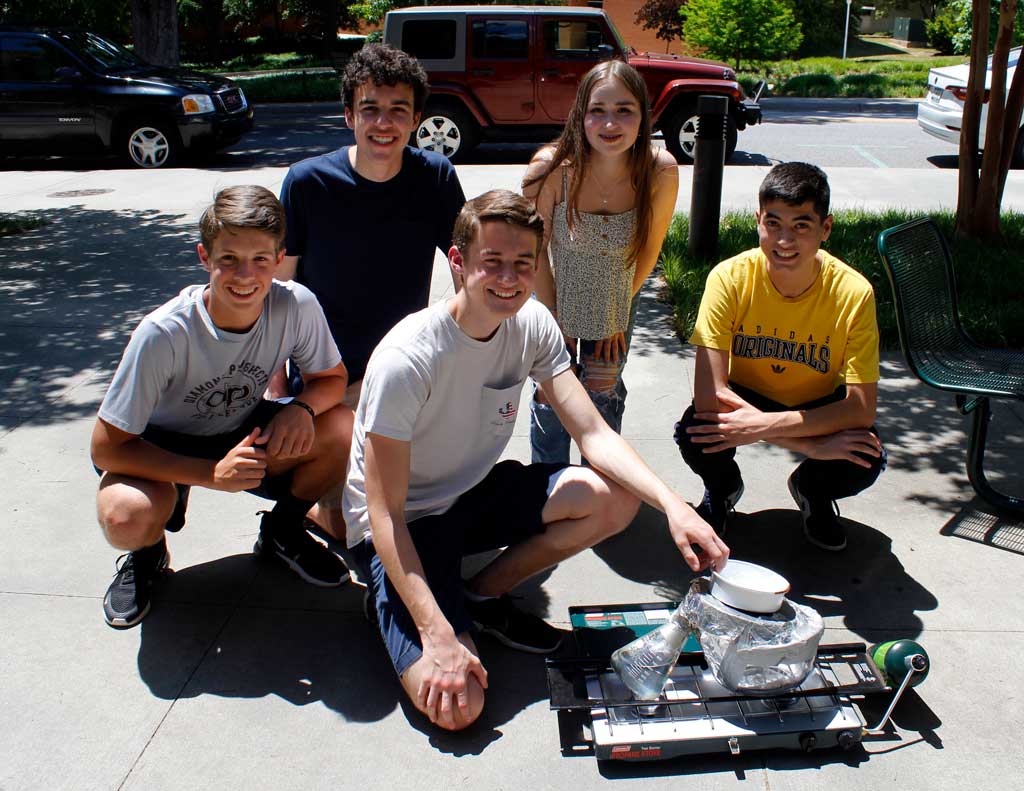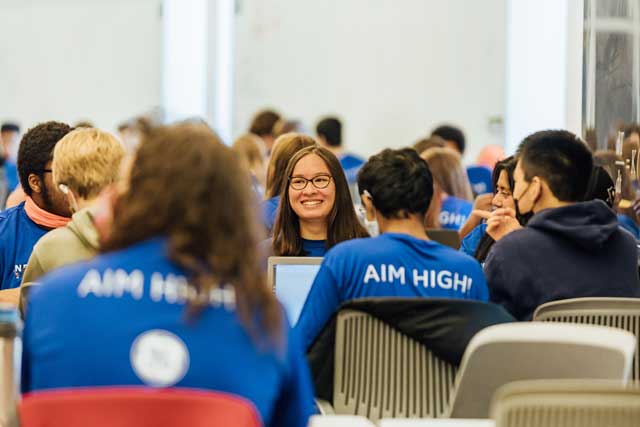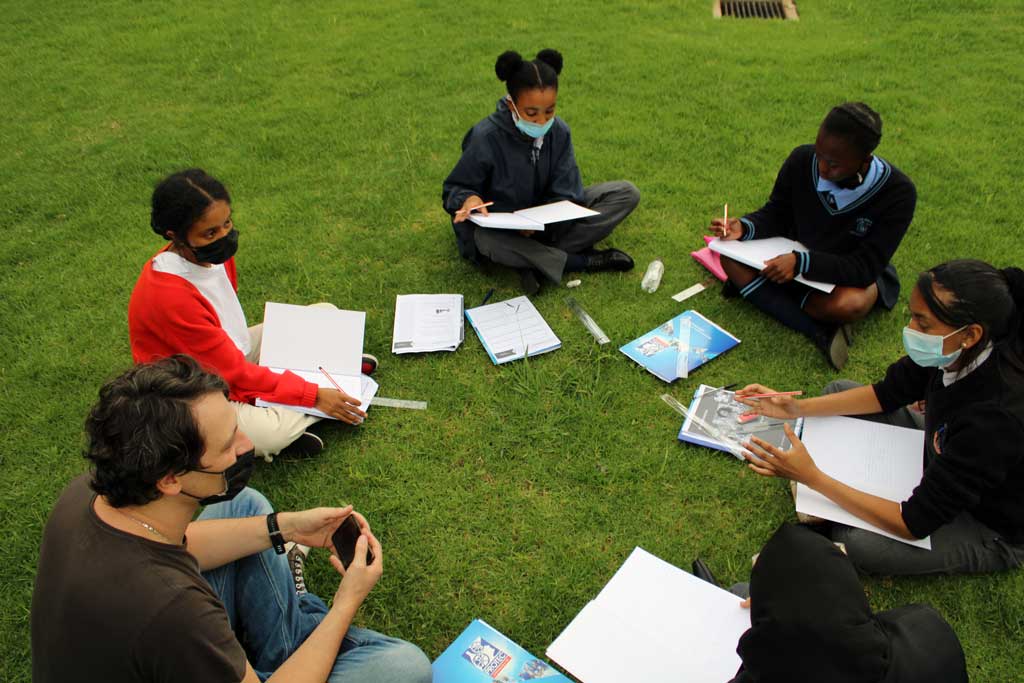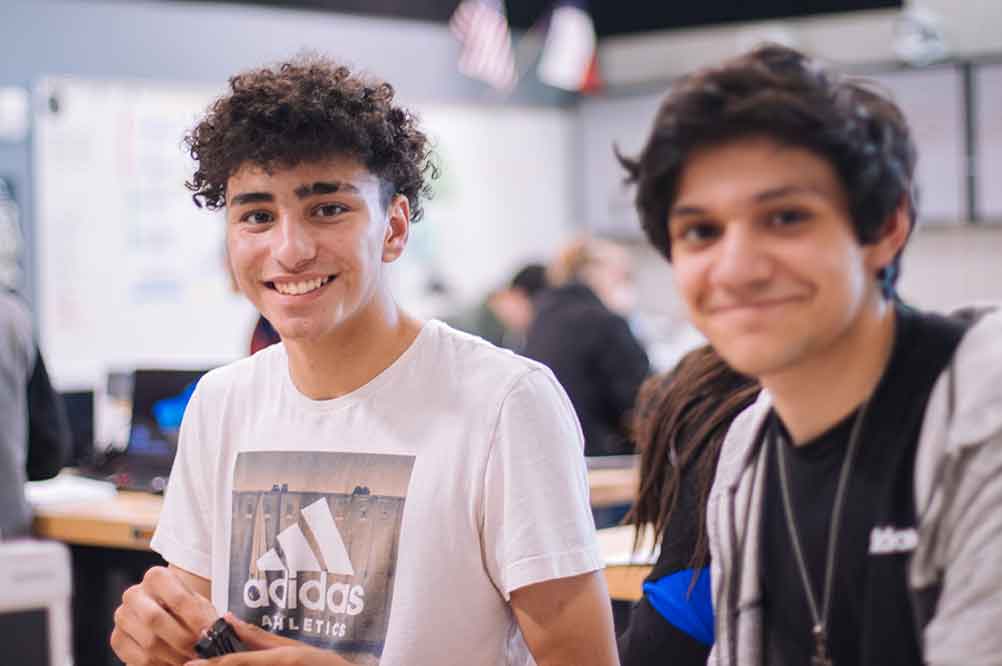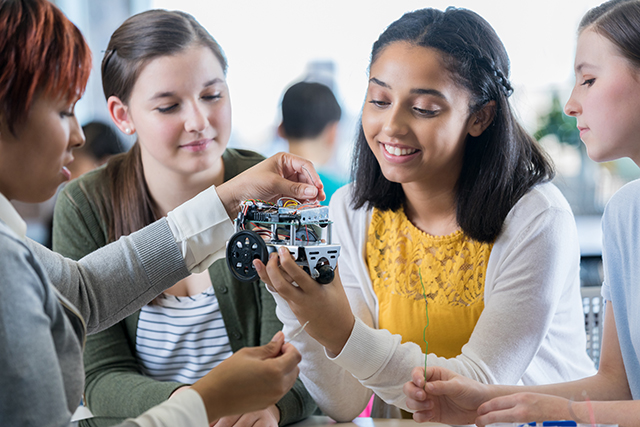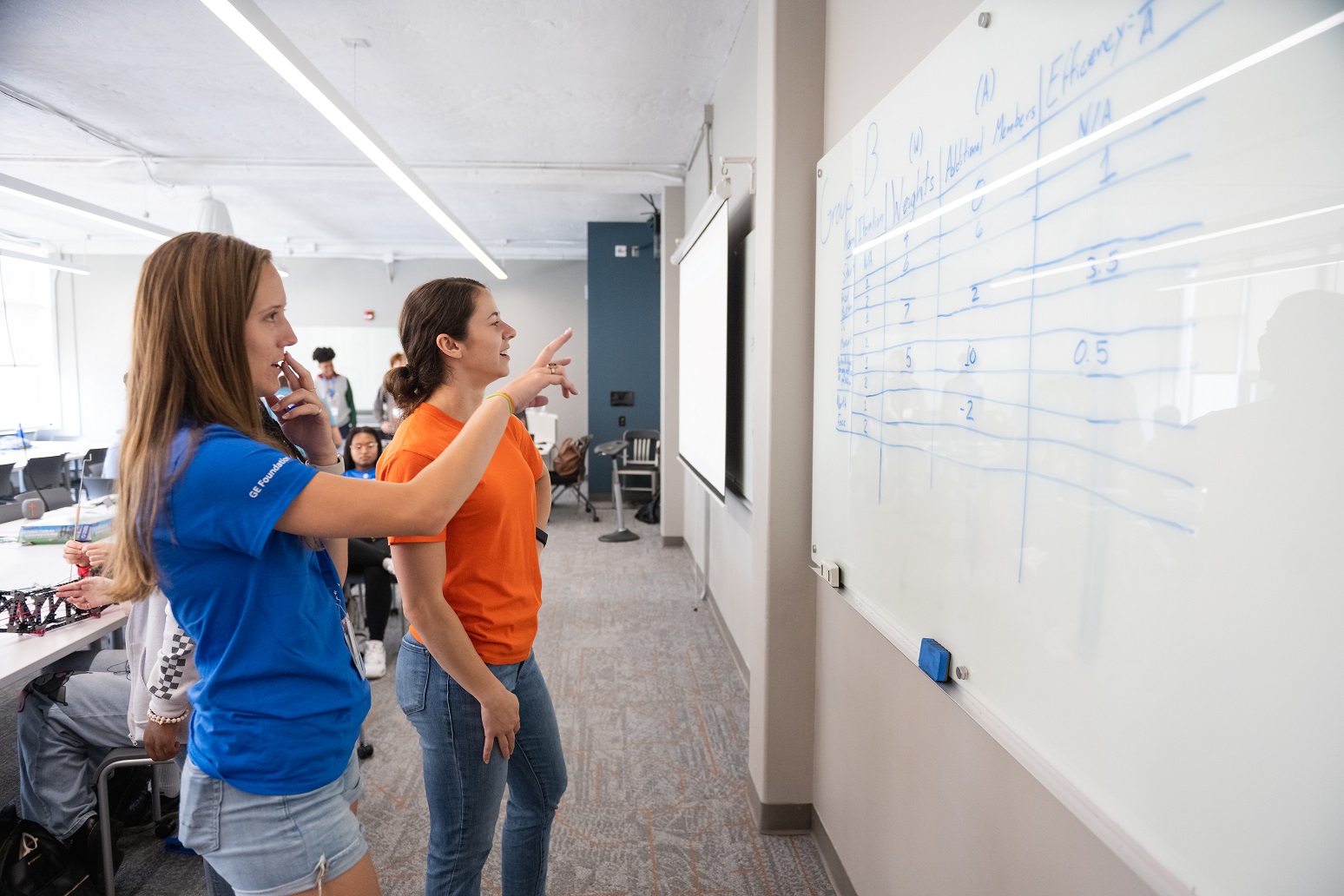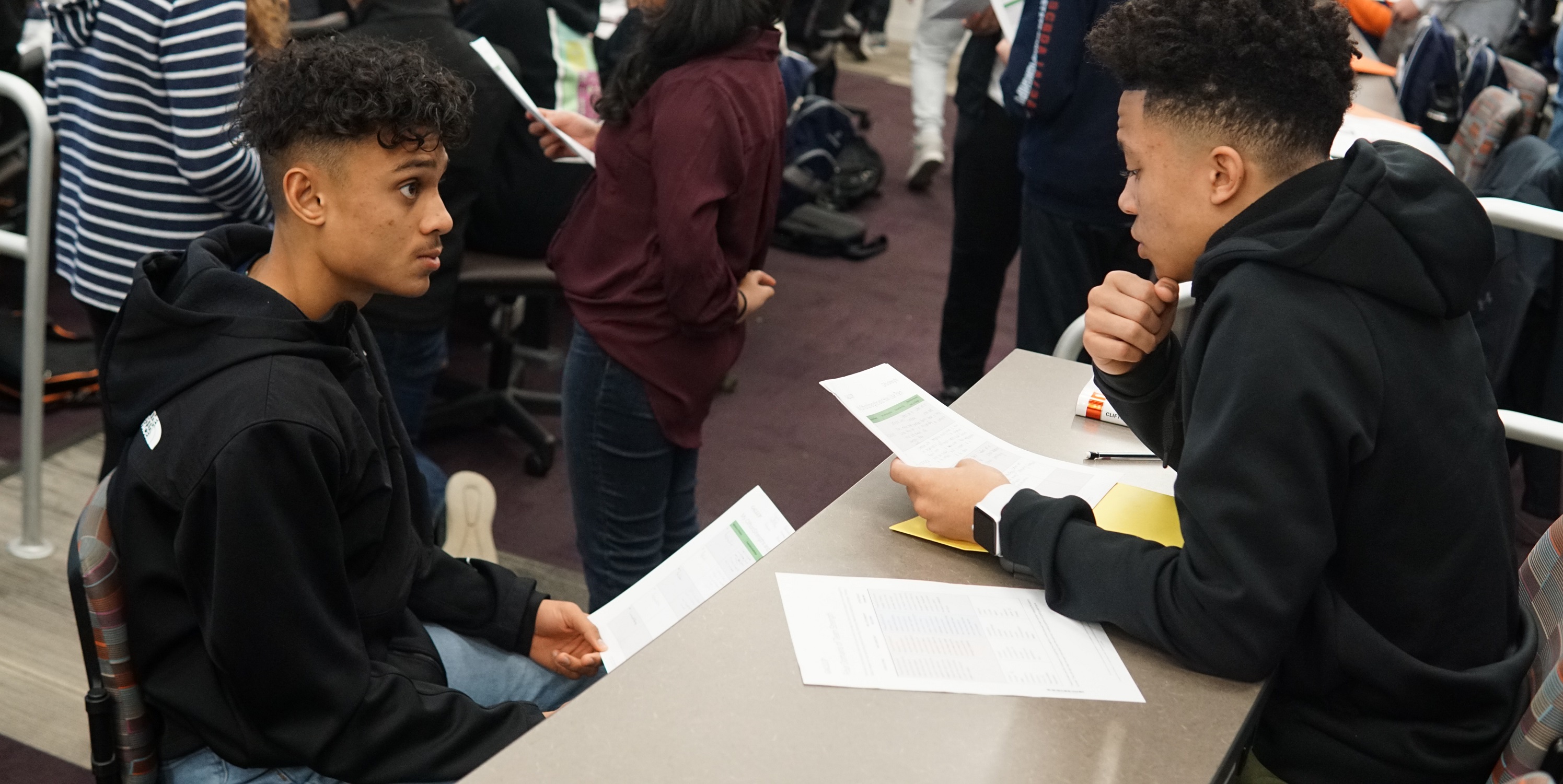With Kendra Northington, Next Engineers College and Career Readiness Specialist
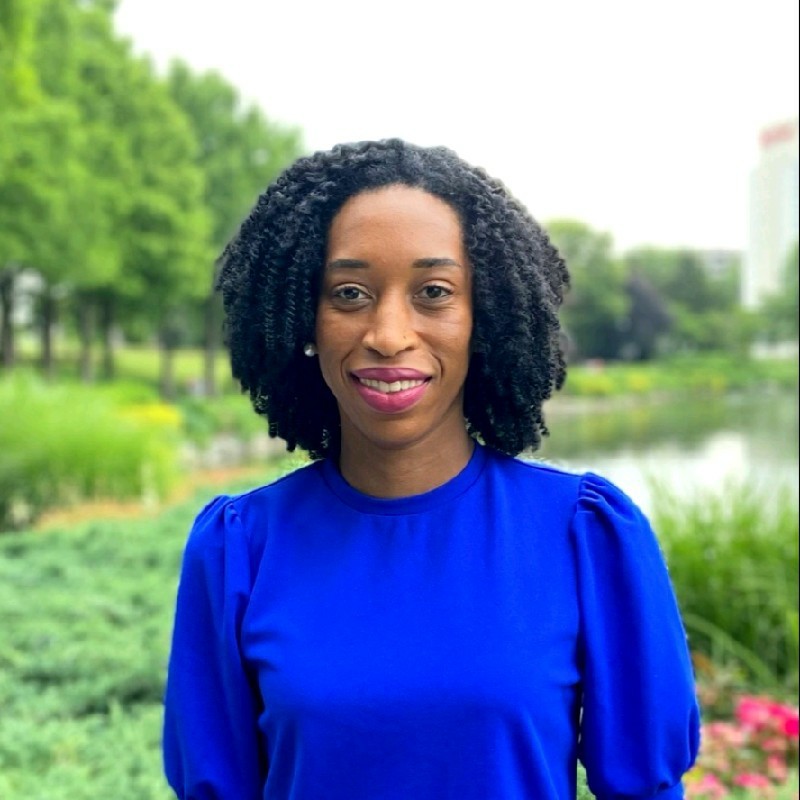 Our goal at Next Engineers is to build the next generation of problem solvers and innovators. Engineering Academy students spend a lot of their time working on design challenges such as desalinating water or making a glider. But what many may not realize is that over a quarter of Academy students’ time is spent on College & Career Readiness (CCR) activities – learning teamwork, communication, and other essential skills to prepare them for whatever path they choose next.
Our goal at Next Engineers is to build the next generation of problem solvers and innovators. Engineering Academy students spend a lot of their time working on design challenges such as desalinating water or making a glider. But what many may not realize is that over a quarter of Academy students’ time is spent on College & Career Readiness (CCR) activities – learning teamwork, communication, and other essential skills to prepare them for whatever path they choose next.
We spoke with Kendra Northington, from FHI 360’s National Institute for Work and Learning, who develops these activities, to learn more about how they help Engineering Academy students become engineers.
Q: What’s your role with Next Engineers? What is your background?
Kendra: I joined Next Engineers with the goal of developing the CCR component of the Engineering Academy program. I previously worked as a career counselor at a few different universities in the Washington, DC, area. I worked directly with mostly undergraduate students, but I also worked in an engineering graduate school.
Q: How would you define “college and career readiness”? Why is it important?
Kendra: It’s often a question I ask when we do facilitator trainings because that term encompasses a lot of different things. We use the term “college” very inclusively to mean anything after secondary school. It’s that next level of education. “Career” is the work one might do. Usually we’re not talking about a job someone will do for the rest of their lives, it’s just that next step.
For me, readiness is not a binary state. Often times, when people think of readiness, they think “Are you ready or not?” I’ve tried to broaden that to a process or journey – getting ready for college or a career is an ongoing state. You’re always doing it.
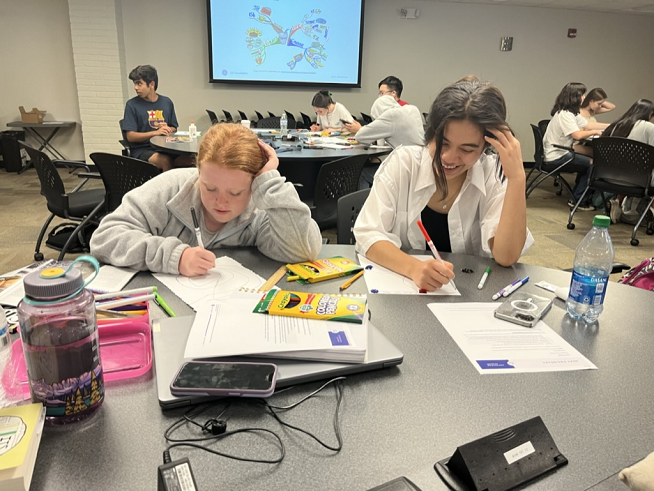
Q: What are some of the major components of Next Engineers’ CCR?
Kendra: The focus of Academy’s CCR is helping students develop and use skills that they might need in either an education or a workplace setting – things like communication, interpersonal skills, teamwork.
Another component is the developmental piece. In a 3-year program, the students are going to change on their own. We want to have a positive influence on that. So, we have them engaging with GE volunteers and facilitators and sometimes university students.
Q: Engineering Academy is designed to teach kids to think and act like engineers. Design challenges seem straightforward: students practice the engineering design process. How do CCR activities fit in?
Kendra: In the process of learning to think and act like an engineer, failure is a necessary component. Good engineers fail in their design, or even just in trying to solve a problem. We want to help the students learn how to manage those setbacks. Some activities focus on self-management, so that when students are acting like engineers, they have the emotional and behavioral component of what engineers do as well as the technical piece.
Engineering is not a field where you’re going to work by yourself. You’re going to work with other engineers, with clients, who have expectations and demands. You’re working under a deadline or budget constraint, so there are a lot of factors that require more than just good math and science skills. You’ve got to have some people skills, too.
Q: Can you tell me about some of the CCR activities?
Kendra: There are 6 essential skills we use to organize the CCR activities. For Academic and Career Development, for example, there’s one where they talk about the college admissions process. This one’s very straightforward – what is engineering and what are the steps to get there?
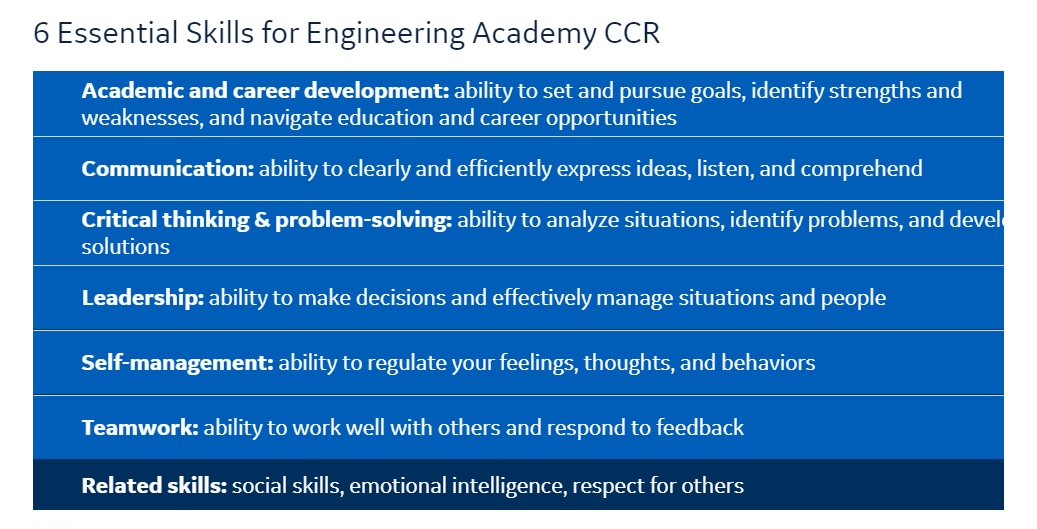
We mentioned self-management – there’s an activity called Empathy Map where students have to think about the client that they’re designing for and put themselves in that person’s shoes and think about how that impacts what they’re building.
Leadership comes up more in Year 3, but Year 1 and 2 focus on things like conflict management. There are some activities where students have to make decisions, but they have to think through what to do if the rest of the team doesn’t want to do what they want to do.
A lot of the activities blend these skills together. In a real world setting it’s not just communication – it’s communication and teamwork and problem solving. I try to come up with activities that incorporate a lot of different skills into something that will help them when they’re working on the design challenges as well.
Q: You picked out 6 essential skills for Next Engineers. Why these skills?
Kendra: There are so many different topics and areas you could cover. Even with a 3-year program, we’re still limited in the time we have. I wanted to identify some key skills that would be applicable if they’re going into engineering, but also even if they don’t – something that would serve them beyond the program.
Next Engineers CCR framework draws from WEF’s Top 15 Skills of 2025 and NACE Career-ready competencies. Research around defining and measuring CCR focuses on the three main areas: academic component, work/career component, and behavioral development. The six essential skills resulted from overlap between these sources.
Q: Next Engineers aims to increase diversity in engineering. Do you think CCR skills development contributes to that aim? In what ways?
Kendra: Yes – I try to! Some of the activities are more explicit. They’re talking about how culture may impact engineering and the work they do. There are others where we’ve encouraged facilitators to tailor the activity to fit the conversations they have because it’s a global program and diversity looks different in different places.
In Year 1 there’s an activity where students have to do a brief report on engineering leaders. They get to choose an engineering leader to talk about. In the list, when I was looking up examples, most were men. Separately, I found a list of women. There are questions in the activity: “Why do we think it’s mostly men on these lists?” Or even just encouraging the students to do some research on their own, to find an example from their community or someone they can relate to. One, this is to try to help bring awareness that in some places there really is a lack of diversity. Having students ask that question around why. Two, this is to help students see people in this field who don’t get that same attention, and how can we bring more attention to that and encourage them to stay on this path.
It’s a challenge sometimes to think about how to engage young people in those conversations without it feeling like another lecture. I think they notice that. They’re smart kids. But how do we encourage them? One way I’ve tried to address that is involving the GE volunteers. GE has Employee Resource Groups, including Women’s Network, African American/Affinity Forum, Hispanic Forum, Pride Alliance, etc. So, there’s an activity encouraging people who are part of those groups to come and talk about that experience. I try to find ways to infuse that discussion without it seeming forced. I think students are very curious about it, so anyway we can spark that conversation is the goal.
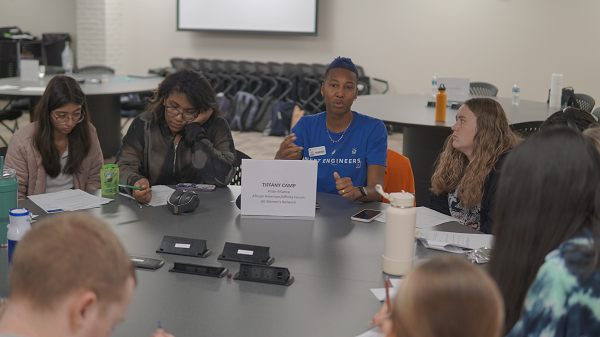
|
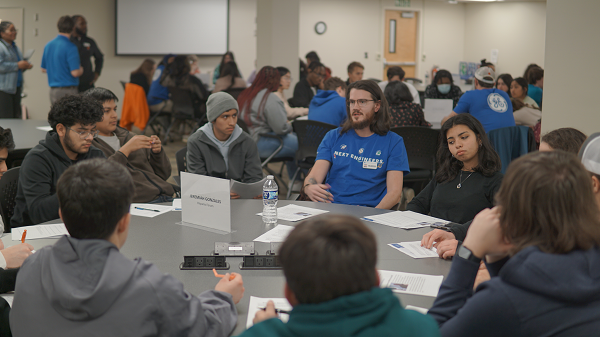
|
Q: How have you seen these skills developing in Academy students since the program started? How have you seen engineering and CCR coming together?
Kendra: I get feedback sometimes from students. It might be something like, “It was really great we talked about time management because it helped me with my schedule at school,” or the students may feel more confident in the presentations they do at the end of their challenges. That’s great to hear and see.
As they get more comfortable with those teamwork and self-management skills and how to communicate with each other, that translates into how the groups work together. For some students that might mean speaking up more when they felt too hesitant before, and for others it’s learning to be more considerate of different viewpoints and learning how to compromise. They’re learning that there’s value in listening to each other’s ideas and not always doing things the way you want to.
The students spend time reflecting and thinking about what they’ve learned, and they recognize their own growth. It’s really a powerful thing for them to be able to articulate it, because when they do get to college or to a job interview and someone asks them, they can clearly answer.

